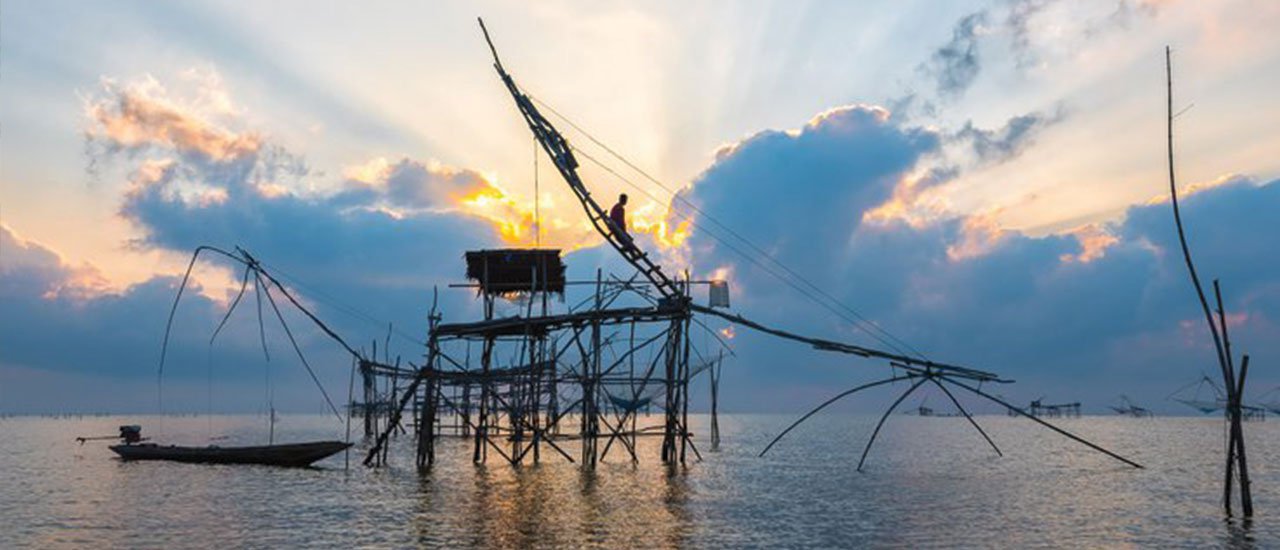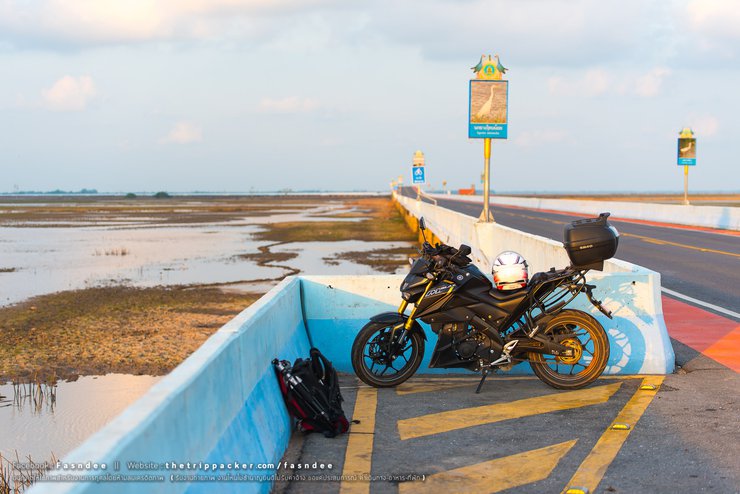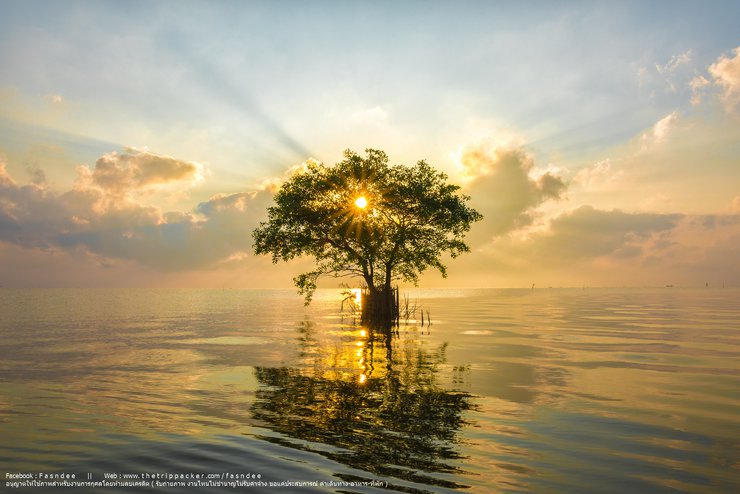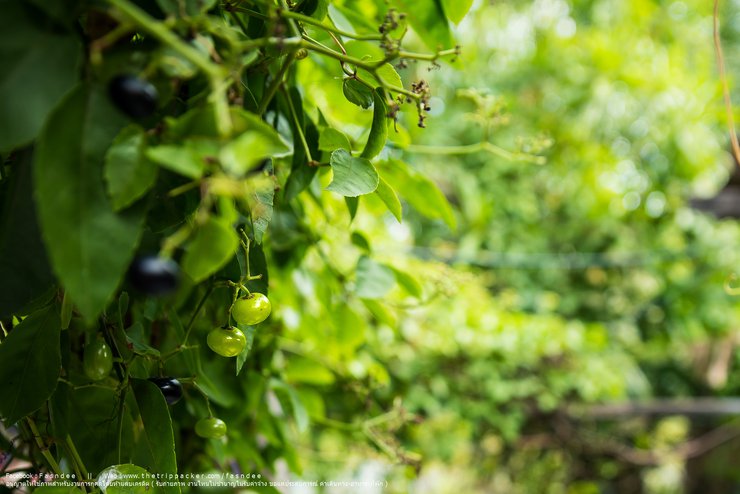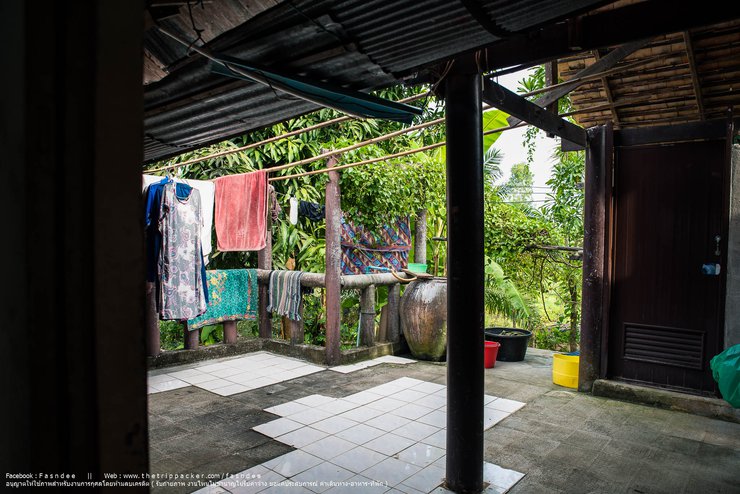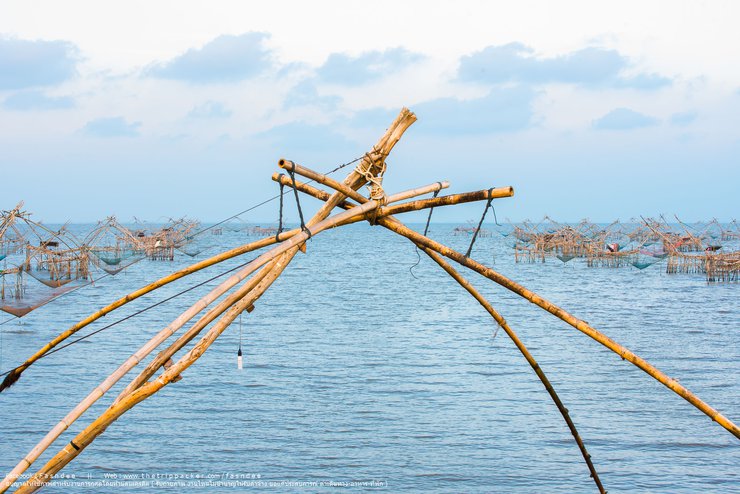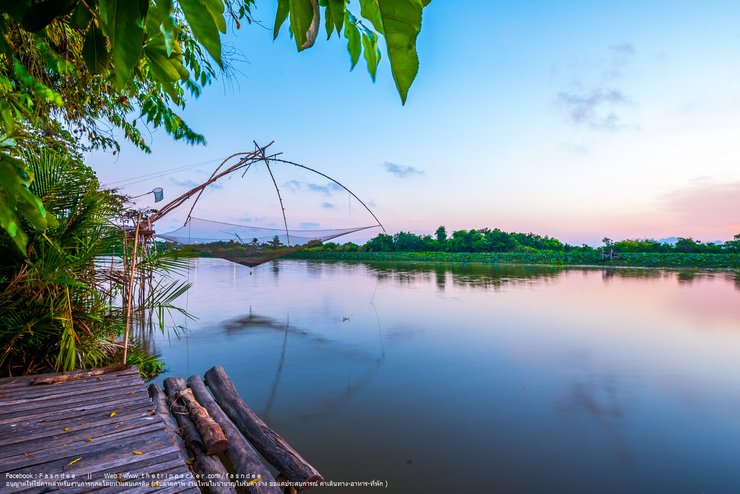
Prior events and thoughts
Phatthalung was not my primary destination for this trip. Surat Thani (Cheow Lan Dam) was my main target. However, I was more impressed by Phatthalung. Perhaps it was because I was fortunate to find good accommodation, meet friendly people, and visit beautiful places. (In Surat Thani, I met a fellow rider who owned the same motorcycle model as me, and we had a long conversation, which was also a pleasant experience. However, I didn't get as many photos as I had hoped, so I was a bit disappointed.)
After deciding to finish the mission at Chulabhorn (March 24, 2016), there were two options left: return to Bangkok or continue. At that time, for the option to continue, there were provinces that I was interested in going to as follows:
Phang Nga – To visit the new tourist attraction "Samed Nang Chee"
Krabi – To pay respects to cousins
Ranong - Like traveling back but stopped by to visit a friend's mother who had given me a place to stay overnight on my trip to Phuket last month.
Others – Where is good? I haven't planned it yet. And because I'm someone who doesn't set deadlines, this option always comes up.
And Phatthalung is another option. I am interested in this place because I have seen pictures of friends on Facebook who, although we hardly talk, I have realized that Phatthalung has many interesting places. It is a landscape with unique characteristics, the animals here are diverse and strange, and the way of life coexists with the giant yoi.
Old review threads about tourist attractions
This is a blank paragraph.
Khao Phanein Thung - Phetchaburi (http://pantip.com/topic/34582338)
Mon Bridge - Kanchanaburi (http://pantip.com/topic/34907371)
To come out
This is a common Thai phrase that can have several meanings depending on the context. In this case, it likely means "to come out" in the sense of "to publicly declare oneself as belonging to a particular group or having a particular identity."
For example, someone might say "ออกตัว" to indicate that they are coming out as gay or lesbian.
Seeking travel companion on a motorcycle, with a focus on photography or research for a review, while keeping costs to a minimum. (You can ride with me as a passenger, but I have a lot of luggage, so it might not be convenient if you also have a lot of belongings.)
I will always plan my trip before I go, but the plan is subject to change. I usually travel on weekdays, and I don't usually have a specific return date. If I find a beautiful place, I can stop and take pictures for hours. If you are interested, you can chat with me on Facebook. My Facebook is https://www.facebook.com/fasndee.

Embark on a journey

These giant water bugs are rarely seen in the evening, as most photographs of them are taken in the morning.
Seeking Shelter: Exploring Homestay Options
With accommodation being a top priority, the limited budget and lack of camping gear necessitate a search for suitable lodging. Homestays emerge as an ideal option, catering to spontaneous trips like this one. Their local knowledge and insights into the area offer invaluable assistance, making them a perfect choice for unprepared travelers.
Finding a homestay wasn't difficult, as I knew that places like "Talenoy" and "Yoyak" would have a fair number of homestays or affordable accommodations. However, I spent a considerable amount of time researching before leaving Chiew Lan, and finally found one that caught my eye: "Uncle Sanan Homestay." However, the online reviews praising this accommodation lacked detailed information, such as directions to the property or contact numbers. The numbers listed were either outdated or no longer in service. It took me searching through over 10 websites before I finally found a working number.
After a successful negotiation with Uncle Riap regarding the route, accommodation, and price, I set off from Chiew Lan on my trusty Yamaha M-Slaz 150cc motorcycle. This time, my trusty steed wouldn't be as burdened as usual, as I had packed light, omitting the tent, bedding, and cooking equipment that typically accompanied me on my adventures.

The photo shows an M-Slaz motorcycle on Ekachai Road, which is elevated above the wetlands near Talay Noi. The photo was taken before the return trip to Bangkok on March 25, 2016. The return trip started around 6:40 PM.
The road leading down to the south was under construction in several long stretches, forcing traffic to merge onto a two-lane road with oncoming vehicles. The constant flow of trucks slowed down the journey, but I had factored in extra time, knowing that this was a possibility. As I mentioned earlier, the directions to the accommodation were unclear. Despite speaking with Uncle Sanan on the phone, I was still unsure of the exact route. I ended up getting lost for about 10 minutes, during which time I could see Uncle's house but was unsure of the access point. An elderly man beckoned me from behind the house, confirming that I had arrived at the correct location.

The traditional Thai wooden houses, built on stilts with open space underneath, are connected by walkways. Some houses are located near ponds with fish, creating a cool and shady atmosphere. Even during the hottest days, the houses remain comfortable, especially under the stilts of the furthest house, where the breeze provides a refreshing coolness during sleep.
I will provide detailed information about the accommodation below. Uncle Sanan is not familiar with technology, so I talked to him. I also mentioned that there is little and incomplete information about how to get here on the internet. This may discourage many people from coming here, even if they are interested. Uncle Sanan asked me to create a page and share it with others, which I am happy to do. This is because the accommodation is affordable, convenient, and comfortable. Moreover, Uncle has access to local information. Most importantly, the food he cooks is delicious.

Uncle Sanan, the owner of the house, has a kind face and demeanor. He talked to me for a while about the places he would take me to photograph tomorrow before showing me the guest room in this house.
Note: The original text is empty, so the translation is also empty.
After tidying up the belongings in the room, Uncle Sanan spoke as if he knew, referring to the clothes that had been stuffed in the backpack since he picked up his nephew. He prepared washing powder, a basin, and a bucket of water, indicating that I could do laundry if I wanted. I proceeded to wash and dry the clothes before taking a refreshing shower. Then, I went out to find a place to take pictures and explore the area to get a feel for it before the big photoshoot tomorrow morning.

The bathroom has an open roof with a thatched covering. The wind blows cool when you shower, making you feel inexplicably refreshed.

Scoop water from the jar, bucket, basin, and prepare the detergent. Wash like this, and you'll feel inexplicably comfortable.
The vegetables growing around Uncle's house can be used for cooking. For example, the wild grapes are right next to the laundry jar.
My uncle brought out his old motorcycle and told me to hop on the back. He wanted to take me to a nearby photo spot. The motorcycle was very old and struggled to climb the hill, but my uncle was determined to take me there. Our accommodation was so close to the giant fig tree photo spot that we could have reached it in about 30 steps. However, people usually rent boats to take photos of the giant fig tree from a closer distance, as this allows for more diverse angles. I didn't think much of it, as my plan for the first day was to explore the area anyway.
I don't dare to expect much from photographing on a boat. I also took pictures on a boat in the early morning at Cheow Lan Lake, and the results were not very usable. Due to my lack of experience and the fact that it was my first time taking pictures on a boat in low light, I relied on luck and thought I could rely on a tripod. As a result, the pictures were not very impressive. Therefore, for tomorrow's giant catfish shoot, I will prepare the camera settings differently, hoping for better results. Even if it doesn't work out, it will be a learning experience, and that's okay.

Bridge over Khlong Pak Pra - Giant Swing Photo Spot
Coordinates: 7.727104, 100.144895 [Spoiler] Click to reveal the message. https://www.google.co.th/maps/place/7%C2%B043'37.6%22N+100%C2%B008'41.6%22E/@7.727104,100.1427063,17z/data=!3m1!4b1!4m2!3m1!1s0x0:0x0?hl=th
The best spot to photograph the giant fishing traps is near the pier. If you have a telephoto lens, you can also take pictures from the bridge. However, as mentioned earlier, the giant fishing traps are best photographed in the morning light, as the sun rises in that direction. Some photos capture the sun rising behind the giant fishing traps as they are lifted by villagers to catch fish, making it appear as if the sun is being scooped up in the nets. These photos are often called "scooping the sun."
Even though I arrived in the afternoon, I waited for the right moment and took some pictures. The sky varied from light to dark blue, depending on the day. On some days, the sky might be even darker during sunset, creating a different kind of beautiful image.

After taking photos for a while, I noticed it was almost 6:00 PM. I decided to head back to my accommodation, as I didn't want to inconvenience Uncle Sanan. Before I left to take photos, I heard him say that he would prepare dinner for us to eat together. I asked him what time they usually ate, and he said it was around 5 or 6 PM, but it could vary. On my way back, I saw Uncle Sanan walking with his camera around his neck. He called me over to take photos at a spot he thought was interesting. There were actually 2 or 3 spots, but I liked this one, which was only 10-20 steps away from my accommodation. It was a pier where I would be spending the next morning.

The next morning, I will board a boat at this pier to take me to various locations for photography.

From the same pier, but looking to the right, you will get a perfect view of the sunset.
My uncle and I stood taking pictures together until the sun set. He told me not to worry about him and to feel at home. After I asked about his meal times, he replied that he could wait so we could eat together. He is a very talkative and friendly person. He greets and asks everyone he meets, and he is quite well-known. In other words, people know him, even if he doesn't know them, but he can still talk to them as if they were close friends.
Uncle's homestay has received numerous positive reviews, not only from Thai people but also from major Thai organizations. This is because his homestay offers a unique opportunity to experience local life and culture. Uncle's extensive knowledge of the area and its attractions, including popular photography spots, has made him a popular choice for travelers. Notably, Thai PBS and the Tourism Authority of Thailand (TAT) stayed at Uncle's homestay just a day before me. Coincidentally, the TAT team in Khao Sok also rented the same boat as me, suggesting that we share a similar preference for exploring during the hot season. Uncle's fluency in English, Malay, and Chinese has also made him well-known among international travelers.
The uncle kept two guest books for visitors to write in before leaving. I noticed that the books contained entries in many different languages. The uncle once told me about a young Chinese woman who had cycled all the way from China to his village. He was worried that she might encounter trouble from the local youth, so he invited her to stay at his house instead. He didn't charge her a single baht. He said he was concerned for her safety, as any harm to her would reflect poorly on the entire country.

A guestbook filled with messages of appreciation from individuals and organizations who have stayed here, written in various languages.
Regrettably, I was unable to capture the delicious meals prepared by the uncle due to my hesitation to impose. The meals were included in the accommodation price and offered unlimited refills. The food was delectable and free of MSG, leaving a lasting impression despite featuring dishes I had never encountered before. Guests with specific dietary preferences are encouraged to contact the uncle in advance to arrange for their desired meals. In some cases, additional charges may apply, which the uncle will disclose beforehand.
After a satisfying meal, I reviewed the photos I had taken that day and prepared for bed. I needed to wake up early the next morning, as the boat would arrive at 5:30 AM. The spacious bathroom had three large beds, each accommodating two people comfortably, with room for a third if necessary. I had the entire room to myself that night. The room was equipped with mosquito nets, fans, and a television. Both True and AIS mobile networks had excellent reception. Electricity was available throughout the day, but Wi-Fi was not provided. The owner did not use Wi-Fi, and I did not need it. The bathroom lacked soap, towels, and sleepwear, so I had to bring my own.
The rooms are equipped with fans, and I'm unsure if air-conditioned rooms are available. The wooden structure of the rooms allows for good ventilation, keeping them cool and comfortable. Mosquitoes are present during the night, but turning on the fan helps to keep them at bay. While I initially anticipated a significant mosquito presence, it was minimal.

Golden sunrise over the fertile wetlands of Thailand - Thale Noi
Wake up early, shower, brush your teeth. Uncle invited us to have coffee and snacks before we set off. There will be no heavy meals, so if you are hungry, bring your own snacks. We will be on the boat for a long time, especially photographers or tourists who want to take pictures from different angles. Just tell Uncle and the boatman, and they will arrange it for you. This took us a long time. I boarded the boat at 5:35 AM and didn't return until 10:00 AM. It was a great deal for the 1500 baht boat fare considering the time spent. Some people cannot access the photo spots because they are restricted areas that require prior permission. However, I was able to enter with the boatman, who is a wildlife officer responsible for the area. He knows what should and should not be done.
There is no text to translate in the provided HTML code. Please provide the text you want me to translate.
Early in the morning, I wasn't the only one who ventured outside. Tourists and photographers were also out on boats, hoping to admire the beauty and take pictures. Locals were also starting to gather to cast their nets. During certain seasons, many locals come out to cast their nets because the water from the river flows into the bay, making the fish more abundant than usual. However, on the day I visited, there weren't many locals casting their nets.

Villagers paddle out to raise their own fishing nets early in the morning, catching small fish for cooking. If there is any surplus, they will sell it. The fish caught from the nets are small, and they are eaten whole. There are not many large fish caught.
The First Stop: Giant Dip Nets at Dawn
Our first stop was to photograph the giant dip nets at dawn. As mentioned earlier, photographing giant dip nets is popular during the morning hours because it allows for capturing the nets with the sunrise. And if you're lucky enough to have a cloudless day, you'll see the villagers raising their nets to catch the sun. However, on the day I went, there were clouds on the horizon, preventing us from seeing the sunrise. Nevertheless, we still managed to capture some impressive images.

When the fishing net is lifted, villagers use a long-handled scoop to collect small fish, then submerge the net back into the water.

Throughout the day, we frequently observe local fishing boats traversing the waters, either raising their fishing nets, setting out to catch fish, or gathering lotus stems.
Giant fishing traps are clustered at the mouth of the river. I saw some in other places, but mostly there were only one or two traps. This is because it is not a bay where fish are abundant. Therefore, I spent a long time at this spot. And perhaps because there were clouds on the horizon on the day I went, I was unable to take a picture of the "setting sun". So I told my uncle and the boatman to circle around the area for a long time.
The uncle was happy to help. He repeatedly said that he would be happy to park the car or take photos wherever the photographer wanted. He wanted these images to be shared with the world to encourage people to visit Phatthalung. (Just kidding, the uncle has a master's degree in tourism and is often invited to give lectures on the subject.) Of course, I took full advantage of this opportunity and spent a long time here waiting for the sun to rise above the clouds.

The giant has dozens of heads. I roughly counted with my eyes, and it seems to be no less than 50.
The giant yo-yo is not indestructible. My uncle told me that the yo-yo wood needs to be changed regularly. In the past, villagers went into the forest to cut wood to make the yo-yo body, but now it is a protected area, a forest reserve, so villagers have to buy wood to make the yo-yo. The yo-yo also has a lifespan. I don't remember how long it was, but not long after that, the wood had to be changed again. It will rot.
During certain seasons, the number of fish traps increases, coinciding with periods of abundant fish. As the water flows into the river mouth, villagers construct fish traps. In some areas I passed, I observed the remains of fish traps without the actual traps, only the supporting structures.

We will always see scaffolding next to each other and giant cranes on opposite sides like this.
Translating the sentence: "To lift a giant fishing net, one must climb to the end of one side and use their body weight to pull the net up. This is a sight I have never seen before. Usually, we see small fishing nets that can be lifted without someone climbing up like this."
The uncle attempted to befriend the villagers. He would engage in conversation with various individuals to facilitate my photography. He understood that some villagers might not be comfortable being photographed.
The uncle shared that he started the homestay because villagers had surplus rice, vegetables, and fish, which they sold to him. He then used these ingredients to prepare meals for tourists, generating income for the villagers. He made an effort to engage in friendly conversations to build rapport and help the villagers understand the benefits of tourism in their area.
I inquired with the boatman whether we could approach closer, concerned about disrupting the local fishermen's activities. The boatman, speaking on behalf of the elder, informed me that we could not get too close. I readily agreed, respecting the villagers' way of life.

The abandoned scaffolding stands empty, awaiting the day when the water is good and the fish are plentiful. It will come alive again.
My patience paid off as the sun began to peek through the clouds. I knew that when the sun broke through the clouds like this, we would get divine light. The moment arrived, and it was breathtakingly beautiful. I told the boatman to move a little, just a little more that way. That's enough, brother. Let's stay still, and then I got the picture below.

A golden beam of light pierced through the clouds, reflecting on the water's surface. A sense of happiness filled the air. I wished for golden rice in the fields and abundant fish in the water. Whether it's related or not, I feel that Thailand is our homeland, a land of gold. It provides us with shelter, food, and a livelihood.
The provided text is empty. There is nothing to translate.
The sun had set, and it was time to move on, even though we didn't get the "sun-scooping" shot. It would be difficult to wait for the sun to become a big ball because the clouds were high. So I turned to my uncle and the boatman and said, "Let's go." My uncle nodded, and the boatman responded, starting the engine to head towards our next destination.
This is a water barrier made from the Lamphu tree, which is also a popular spot for photography. When standing on the shore, it appears as if the Lamphu tree is standing alone in the middle of the sea. Photos are only taken during the morning light.
The boatman turned off the engine upon arrival and used a paddle instead to avoid noise, save fuel, and easily reach my desired location.

The uncle and the boatman at the beginning of Lamphu. The boatman will have both oars and long poles because the water in this area is not deep. Use a long pole to help support the boat to be stable. Stop suddenly when I asked him to stop.

The combination of the Bodhi tree and the clouds creates a stunning visual spectacle, especially when illuminated by divine light. Contrary to popular belief, clouds can enhance the beauty of photographs, as evidenced by this captivating image.
I inquired about the twin rain trees, and the uncle turned to ask the boatman. The boatman replied that there were indeed twin rain trees, but not many people went to take pictures of them. I said that I wanted to take some pictures, and the boatman, without hesitation, granted my request.

Originally, this picture was a bit too close to the tree, because the side was too close to the tree. I asked the boatman to move closer to the shore, so I got the clumps of reeds, or whatever they were, as a foreground. It's a pity that the sun was right in the middle of the tree. It's a picture I took and lost.

Many rain trees grow in this area. If you don't want to take a boat to take pictures, you can use a telephoto lens and stand near the back of Bang Pak Pra School. Some photographers have said that they took pictures from there.
The journey continues as the sun rises high, casting a warm glow. The remaining angles for photographing birds, the lotus pond, and the swamp forest leave me with the feeling that I may not capture images as captivating as the giant fig tree and the Lamphu tree. However, I realize that photographing birds requires a telephoto lens with a long focal length, which I only have up to 200mm. This limits my ability to capture close-up images of birds, as they tend to fly away before I can get close enough. As for the lotus pond, I have no expectations, and for the swamp forest, even less.

The sun rises high, and we continue our journey.
The next destination was an interesting birdwatching spot with a unique landscape, "Thung Laem Din." My uncle told me that the foreigners who came with us exclaimed "Amazing Unseen," and I agreed that it was quite unusual and beautiful. However, I was unable to capture it properly in my photos.
The terrain is characterized by water erosion, creating shallow depressions in the soil. These depressions are clearly visible, and in some places, they have isolated small patches of land, making them appear as if they are floating on the water, similar to ice floes in the polar regions. However, unlike ice, these "floes" are composed of soil and are covered with green grass, creating a visually appealing landscape.
This place is also a food source for migratory birds from Siberia. They come here to escape the cold, lay eggs, hatch their young, and then fly back. This makes this place a haven for a wide variety of bird species. For birdwatchers, this is paradise. However, after this month, the number of birds will start to decrease.

This geological formation, characterized by erosion that has carved out a distinct slab of land resembling a detached fragment from the mainland, is a common sight. Its unique and visually striking appearance invites exploration, allowing visitors to ascend to its summit.

We found a decent-sized piece of land, and my uncle asked me to take a picture with him. However, I didn't like how the picture turned out, so I deleted it. This picture is better for both my uncle and the boatman.
The boat approached a large sandbank where numerous birds were spotted. The boatman, aware of my limited lens capabilities, suggested we stop and let me climb up to take photos. As a photographer himself, he understood the challenges of capturing birds from a distance. Upon reaching the sandbank, I attempted to photograph the birds, but to no avail. The open terrain offered them a clear view of my approach, causing them to scatter before I could get close enough for a decent shot.

Unable to capture the bird, I turned to photograph the uncle to ease the awkwardness. The uncle would always pose for the camera whenever I pointed it in his direction. 555
One highlight of my trip to Thale Noi that I almost forgot to mention is the water buffalo, or albino buffalo, which I didn't see many of. However, there are actually quite a few of them. I may have just missed the herd during my visit, which is why I didn't get many pictures.
Patches of aquatic weeds begin to appear in abundance, spreading across the water's surface. While aesthetically pleasing, these weeds serve as a habitat for numerous water buffaloes that frequently surface and submerge in the vicinity. I inquired with a local elder about the buffalo's size, noting their considerable girth. The elder assured me that they were not overweight, despite their constant grazing. I pondered the reason for their lack of weight gain, considering the possibility that their vigorous diving and surfacing activities might contribute to their lean physique.

My water buffalo are often seen in herds. Some individuals may stray from the herd because they cannot keep up.
The uncle mentioned that the buffaloes are relatively familiar with tourists and sometimes even turn to play with the camera. However, I found that when the boat approached them, they would run away. The boatman seemed to understand this and turned off the engine, instead opting to paddle closer. This allowed me to capture images of the buffaloes facing the camera. Otherwise, I would only have been able to capture images of their backs as they fled from the boat.

A herd of buffalo attempting to flee a still-running boat.
The provided text is empty. There is nothing to translate.
Some of the water buffaloes seem indifferent to the herd, swimming slowly at their own pace. I don't know why they are kept here, whether for plowing the fields or not. I forgot to ask the uncle. All I know is that they are one of the stars of the Talay Noi Wetland. Despite their apparent freedom, they have their own enclosure and return to it at a certain time. In the morning, the villagers open the enclosure and let them out to graze.
From here, we will start heading forward, although I'm not sure where. We began to see lotus flowers, but it wasn't a designated lotus viewing spot. It was more like a narrow stream with both white and red lotuses. Uncle said the white lotuses have a very fragrant smell.

Before reaching the lotus pond, you will encounter several streams with similar characteristics. These streams feature various lotus species, including a different variety from the pond. Additionally, you will find swamp forests and water spinach groves, showcasing the diverse landscape. Throughout this journey, you will encounter various bird species.
While passing by, I saw two elderly villagers, an uncle and an aunt, collecting water spinach to sell. The uncle greeted me in his southern accent, as usual, and offered to sell me some water spinach. He said he would cook it for me for lunch. I had never tried it before, but I knew that when visiting a new place, it's important to try the local cuisine.

Elderly couple selling lotus stems.

Uncle Sanan bought about 4 bundles, almost suitable for uncle and aunt. Uncle and aunt smiled broadly. All 4 bundles cost less than 50 baht.
The lotus flowers in this area tend to be red, similar to those in the large pond. However, in some spots, there are only white lotus flowers with a fragrant scent, which the uncle said have medicinal properties.

Red lotuses are scattered along the stream, some distance away from the vast lotus pond.

A myriad of exotic birds stood in a row, but few allowed me to capture them in a photograph. The boatmen have recently switched to using engines instead of oars.

This creature has been trying to stand on the buffalo's back for quite some time now.

Oops, the band broke up. The police came. Oh, it wasn't the police, it was the sound of the boat that scared them. I apologize for the disturbance.

The small one is gone, and the big one is alone.

The species of this bird is unknown, but it appears to be quite stoic and doesn't readily flee (although most do, there are some exceptions). I've observed some individuals standing completely still, as if they were aware of potential prey nearby.
The provided text is empty. There is nothing to translate.

Some of them were camouflaged, hiding in the bushes. I guessed that they didn't flee because they probably had their eggs there. They must have been guarding their eggs.

Standing at a moderate height wouldn't be too frightening, and I'm comfortable posing for photos.
Frankly, I had little hope of capturing any bird images, and I probably wouldn't have gotten any if it weren't for the boatman. He seemed to be a close friend or relative of Uncle Sanan. He wasn't in a hurry, and Uncle kept telling him that he needed to get the images out there.
The boatman will keep an eye on me. If he sees me raise my camera, he will often slow down the engine to make it quieter. Or, if he sees me aiming at something in the distance, he may turn off the engine and use the oars instead. If he doesn't know, I can always ask him without hesitation. He is more than happy to help.
I'm not sure if renting a boat from the pier directly would be the same. My uncle said it wouldn't be, and I wouldn't be able to go around like this. I paid a little more (1500 baht), but I was able to visit many places. We left at 5:30 AM and returned at 10:00 AM. Personally, I think it was very worthwhile for the level of care I received from the boat captain.

One of the two swamp forests we will pass through will have this kind of view throughout.
Upon entering the swamp forest, a sense of coolness enveloped us. However, I was unable to capture many compelling images. To be honest, I felt a lack of inspiration at that moment. In retrospect, I wish I had ventured closer to the fallen trees, as they might have offered more interesting perspectives. At the time, I was unable to think of any other ideas.
There is no text to translate.
After a long time in the swamp forest, we finally emerged into the open water again, nearing the red lotus pond.
Many traditional fishing tools, known as "sai," can be seen in this area, used by locals to catch fish.

The vast expanse of water reappeared, the surface relatively calm, the waves we saw were from our own boat.
Villagers can be seen casting their nets or checking their fish traps in the nearby ponds. The water in the pond is very still, creating beautiful reflections. With beautiful clouds in the sky, we turn our backs to the sun, making the sky appear a bright blue. It feels comfortable, even though it is late morning and the sun is getting stronger.

Villagers came to cast their nets. As usual, Uncle Sanan greeted them as they passed by.

Fish traps are abundant in this area.
This is an empty paragraph.

Villagers came to check their rice fields. I wondered if they could remember which field belonged to whom.
We arrived at a large, beautiful lotus pond. However, I didn't feel particularly inspired and only took a few photos. Afterwards, we returned to the pier via a small canal and checked into our accommodation for a long rest, as we would be departing the next day. Before leaving, I planned to take some photos on Ekachai Road, also known as the 80th Birthday Anniversary Road.

At the large lotus pond, we will see the pavilion for tourists again in this area.
I'd be glad to translate the provided Thai sentence into English, adhering to the specified tone and style:
Original Thai:
ผมกลับเข้าบ้านลุงสนั่น เช็ครูปคร่าว ๆ ่วาใช้งานได้บ้างไหม ถ้าไม่ได้อาจจะต้องอยู่ต่อ แต่สรุปแล้วคือใช้ได้ ก็เลยเดินไปคุยกับลุงสนั่นว่าจะกลับวันนี้
English
I returned to Uncle Sanan's house and briefly checked the photos to see if they were usable. If not, I might have had to stay longer. However, they were usable, so I went to talk to Uncle Sanan and informed him that I would be leaving today.
Uncle Sanan offered me to stay longer, as it would be dangerous to travel back at night. He said he wouldn't charge me because I helped him with his Facebook page and setting the location of his homestay on Google Maps (which is currently pending verification. Google will send a postcard to Uncle to confirm that he is the actual caretaker of the location).
However, I am feeling a bit shy and would like to return home. The stir-fried lotus root with black pepper and other dishes prepared by Uncle were truly delicious.
After a two-hour nap, I woke up at 5 pm, showered, packed my belongings, and said goodbye to Uncle Sanan. I then headed to Ekachai Road, the original name used by locals. It is an elevated road that stretches over the wetland area. This area is known for its abandoned twin houses, which are a popular photography spot.

The abandoned house, its original owner and purpose unknown, has become a popular spot for photographs among visitors.

The water level in the community's wetlands is likely to be lower this season.

The sun is setting.

Ekkamai Road was bathed in the golden glow of the setting sun.

The sunset was uncooperative.

The last light before leaving Phatthalung.
At approximately 6:30 p.m., I began my journey back to Bangkok. It was a long ride, and I didn't arrive home until 10:20 a.m. I was tired and had to stop frequently at gas stations to rest. However, it was better than falling asleep and crashing. I managed to capture some interesting photos, and I wouldn't want to die without editing them first.

Lungsanan Homestay, Pakpra Village
Coordinates: 7.729804, 100.143597 [Spoiler] Click to reveal hidden texthttps://www.google.co.th/maps/place/7%C2%B043'47.3%22N+100%C2%B008'37.0%22E/@7.729804,100.1414083,17z/data=!3m1!4b1!4m2!3m1!1s0x0:0x0?hl=th

Turning into a small alley, follow the path and you will see a sign that reads "Home stay" in front of Uncle Sanan's house.
The uncle's house is located near Khlong Pak Pra, making it easy to find. It's close to the well-known View Yor restaurant. If you're looking for affordable accommodation with free meals and a local guide, the uncle is your best bet. He can recommend tourist spots, arrange boat rentals, and even join you on the boat to provide personalized recommendations.
The provided text is empty. There is nothing to translate.
In addition to the tourist attractions I mentioned in this article, Uncle also offers tour packages to other islands in the Phatthalung area, or provides airport pick-up and drop-off services, and takes you on further tours.
To contact Uncle Sanan, please use the following phone number: 081-738-8271. This is the only number to use.
The accommodation fee includes 3 meals (unlimited rice refills) per person at 550 baht. I spoke with the uncle about setting up a tent, and he said it was okay, but he only asked for the cost of electricity, water, and some food.
What kind of food do you want to eat? Do you want shrimp or squid? You can call your uncle in advance. He will try to find it for you. If he can't find it, he will let you know.
For the location on Google Map, please refer to the map above. I am currently setting the location point for Uncle. I am waiting for Google to send a confirmation code to Uncle. Uncle will call me to confirm, and then the name "Uncle Sanan Homestay, Pak Pra Village" will appear on the world map in Google Map.

Laundry corner, drying area, bathroom

Upon entering the front of the house, you will be greeted by a lush and verdant scene.
The provided text is empty. There is nothing to translate.

A bed and a table with chairs for relaxing are located in front of my room. There is a connecting path to the kitchen and other parts of the house.
The provided text is empty. There is nothing to translate.

Another angle from the front of my room.

Moving along the connecting path, you will find an ample space suitable for casual conversations and gatherings, even in the middle of the night.

From the backyard perspective, the space under the house is accessible and breezy, perfect for napping. Even a short stay there makes my eyelids heavy.
เดินทางตามฝัน
Friday, September 27, 2024 10:22 AM

